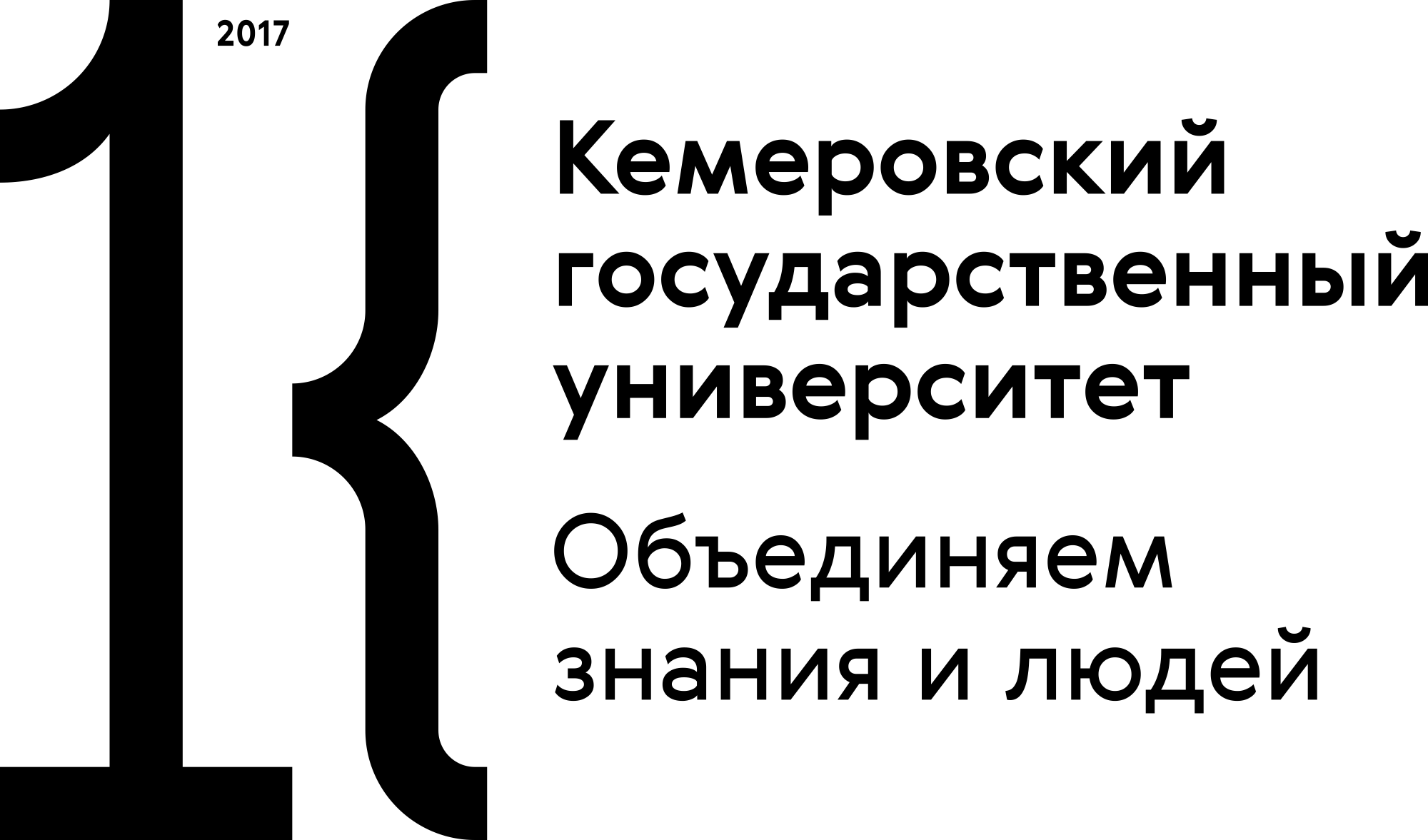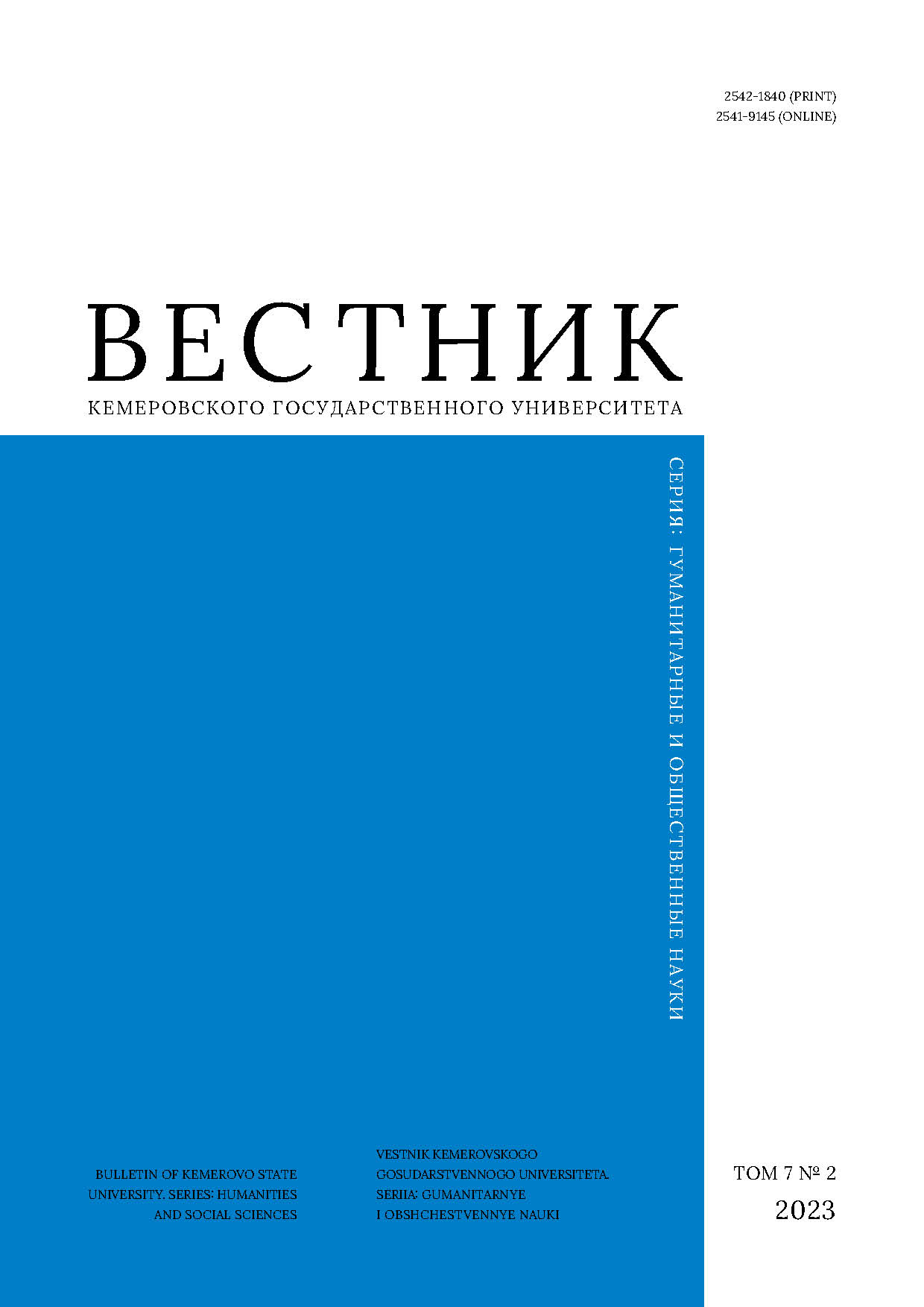Kemerovo, Russian Federation
Kemerovo State University
Daqing, China
Daqing, China
Semiotic systems transmit cultural information. Efficient semiotic transmission is concise, fast, and with minimal pragmatic or semantic losses. Nations strive to preserve and communicate information that expresses the specificity of their culture. This research systematized the available data on semiotic systems that encode Chinese culture outside China. The research relied on conceptual and terminological methods of cognitive linguistics, culturology, and general scientific methods, i.e., synthesis, analysis, and comparison. The authors divided semiotic systems into heterogeneous hierarchical levels, represented by territorial, landscape, ritual, and artifact semiotic systems: 1) urban space; 2) ritual and ceremonial practices; 3) dances; 4) landscape singularity; 5) goodwill talismans. The classification made it possible to optimize work with cultural semiotics, as well as to minimize the barrier of semiotic recognition and prevent data distortion, thus facilitating approximation during mutual cultural integration while maintaining cultural specificity. The research prospects include a comparative analysis of the semiotic systems of Chinese culture inside and outside China.
cognitive linguistics, sign system, information coding, information loss minimization, soft power, Chinese culture
1. Nye J. Soft power: the origins and political progress of a concept. Palgrave Communications, 2017, 3. https://doi.org/10.1057/palcomms.2017.8
2. Vilchikova E. V., Ryabova M. Yu. Evolution of sign theory in Russian and foreign linguistics. Vestnik Chitinskogo gosudarstvennogo universiteta, 2010, (5): 33-38. (In Russ.) https://www.elibrary.ru/mtzvgl
3. Schreider Yu. A. Logic of sign systems: elements of semiotics. 2nd ed. Moscow: URSS, 2010, 62. (In Russ.) https://www.elibrary.ru/qwxfxf
4. Garrido V. V. Main symbols in cultural memory of China. Social and cultural transformations in the context of modern globalism: 4th International Conference on Social and Cultural Transformations in the Context of Modern Globalism (SCTCMG 2021), Grozny, 19-21 Mar 2021. Grozny: European Publisher, 2021, vol. 117, 604-610. https://doi.org/10.15405/epsbs.2021.11.79
5. Kuicheu N. C., Fotso L. P., Siewe F. Iconic communication system by XML language: (SCILX). W4A '07: Proceedings of the 2007 international cross-disciplinary conference on Web accessibility (W4A). NY: Association for Computing Machinery, 2007, 112-115. https://doi.org/10.1145/1243441.1243467
6. Solomonik A. B. Functions of signs, sign systems, and semiotic reality. Media. Information. Communication, 2013, (6): 24-26. (In Russ.) https://www.elibrary.ru/tgrruz
7. Gordeeva E. V. Sign systems in advertising. Molodoi uchenyi, 2009, (7): 230-233. (In Russ.) https://www.elibrary.ru/muaksj
8. Frumkina R. M., Braudo T. Ye. Sign systems as substitutes for natural language. Cultural-Historical Psychology, 2006, (3): 28-37. (In Russ.) https://www.elibrary.ru/khxzpj
9. Shinkevich M. N. Color in the cultural code system. ART VISUALIS. Form formation in the era of polystylism: Proc. VI All-Russian Sci.-Prac. Conf., Omsk, 25 Oct 2019. Omsk: OmSTU, 2019, 168-173. (In Russ.) https://www.elibrary.ru/rykunw
10. Solomonik A. B. Positive semiotics: signs, sign systems, and semiotic activity. Moscow: URSS, 2011, 190. (In Russ.) https://www.elibrary.ru/rbyftx
11. Skorokhod L. A. Approaches to the definition of the concept of culture. Molodoi uchenyi, 2017, (47): 243-245. (In Russ.) https://www.elibrary.ru/zulnsh
12. Makhortova O. V., Mordovina L. V. Features of the symbolism and signs of China. Analitika kulturologii, 2011, (1): 137-139. (In Russ.) https://www.elibrary.ru/qzcopr
13. Garrido V. V. The Dragon King (Long Wang 龙王) in the religious beliefs of Ancient China. Religiovedenie, 2020, (1): 67-72. (In Russ.) https://doi.org/10.22250/2072-8662.2020.1.67-72
14. Wang Y., Duan Y. A study on the classification and value of Ming dynasty Paifang in China: a case study of Paifang in Jinxi County. Journal of Asian Architecture and Building Engineering, 2016, 15(2): 147-154. https://doi.org/10.3130/jaabe.15.147
15. Wheatley P. The ancient Chinese city as a cosmological symbol. Ekistics, 1975, 39(232): 147-158.
16. Wilcox H. Movement in spaces of liminality: Chinese dance and immigrant identities. Ethnic and Racial Studies, 2011, 34(2): 314-332. https://doi.org/10.1080/01419870.2010.528439
17. Zhang D. Cultural symbols in Chinese architecture. Architecture and Design Review, 2019, 1(1). https://doi.org/10.18282/adr.v1i1.556
18. Li M. The role of semiotics in creating the image of Russia in the Chinese culture. Society: Philosophy, History, Culture, 2018, (2): 108-113. (In Russ.) https://doi.org/10.24158/fik.2018.2.22
19. Markina K. N. Semiotic and cultural foundations of the typology of cultures: traditions in Russia and China. Voprosy kulturologii, 2007, (8): 27-30. (In Russ.) https://www.elibrary.ru/kuzgcb
20. Chzhan Y. To the description of semiotic theory in the tradition of Chinese linguistics. Litera, 2021, (4): 171-180. (In Russ.) https://doi.org/10.25136/2409-8698.2021.4.29612
21. Chzhen G. Semiotics of China and its reflection in modern Russian literature. Uspekhi sovremennoi nauki i obrazovaniia, 2017, 4(2): 202-206. (In Russ.) https://www.elibrary.ru/xxnmlr
22. Shim H. A study of the cognitive function of Chinese characters based on the semiotics of writing. Journal of Chinese Writing Systems, 2021, 5(1): 31-41. https://doi.org/10.1177/2513850221990441
23. Tang X. Y. Decorative arts of gates detail components in Chinese traditional architecture. Advanced Materials Research, 2013, 860-863: 1237-1243. https://doi.org/10.4028/www.scientific.net/AMR.860-863.1237
24. Ting L. Towards a semiotics of Chinese characters. Signs and Media, 2022, 1(2): 111-141. https://doi.org/10.1163/25900323-12340017
25. Zhu H., Rao G. 2018 annual report of Chinese semiotic studies. Signs and Media, 2020, 1(1): 5-25. https://doi.org/10.1163/25900323-12340002
26. Żychowska M., Ivashko Y., Chang P., Dmytrenko A., Kulichenko N., Zhang X. M. The influence of traditional Chinese landscape architecture on the image of small architectural forms in Europe. Scientific Journal of Latvia University of Life Sciences and Technologies Landscape Architecture and Art, 18(18): 59-68. https://doi.org/10.22616/j.landarchart.2021.18.06
27. Hendel R. Cultural memory. Reading genesis: ten methods, ed. Hendel R. Cambridge: Cambridge University Press, 2010, 28-46.
28. Martynenko N. P. Semiotics of Chinese culture: to the question of origin and development of the dragon image. Vestnik Moskovskogo universiteta. Seriia 7. Filosofiia, 2019, (4): 68-76. (In Russ.) https://www.elibrary.ru/rhdtpq
29. Somkina N. A. Traditions of zoomorphic symbolism in the ritual side of everyday beliefs: Pre-Imperial and contemporary China. Vestnik Sankt-Peterburgskogo Universiteta Vostokovedenie i Afrikanistika, 2010, (1): 30-46. (In Russ.) https://www.elibrary.ru/mvzjhz
30. Niu J. Chinese folk songs when lighting lanterns in Henan province. Culturology, art criticism, and philology: modern views: Proc. All-Russian Sci.-Prac. Conf. with Intern. participation, Cheboksary, 25 Dec 2020. Cheboksary: Sreda, 2020, 66-70. (In Russ.) https://doi.org/10.31483/r-97499
31. Polyakova E. A. Colours symbolism of China: cultural linguistic's aspect. Mezhdunarodnyy nauchno-issledovatelskiy zhurnal, 2015, (10-5): 89-90. (In Russ.) https://doi.org/10.18454/IRJ.2015.41.189
32. Nikolaeva A. Y., Nikonova I. A. Semiotic aspect of Chinese costume. Functional grammar: theory and practice: All-Russian with Intern. participation Sci.-Prac. Conf., Cheboksary, 25 Feb 2021. Cheboksary: ChSPU, 2021, 423-427. (In Russ.) https://www.elibrary.ru/emoteh
33. Beattie J. Growing Chinese influences in New Zealand: Chinese gardens, identity and meaning. New Zealand Journal of Asian Studies, 2007, 9(1): 38-61.
34. Brash C. Classical Chinese gardens in twenty-first century America: cultivating the past. ASIANetwork Exchange: A Journal for Asian Studies in the Liberal Arts, 2012, 19(1): 17-29. http://doi.org/10.16995/ane.18
35. Chang B. Chinese lion dance in the United States. Asian Americans: An encyclopedia of social, cultural, and political history, eds. Park E., Zhao X. Santa Barbara, CA: ABC-CLIO, 2013, 284-285.
36. Chua J. The emergence of Chinese dance in postcolonial Singapore, 1960s-1970s. Dance Chronicle, 2017, 40(2): 131-164. http://doi.org/10.1080/01472526.2017.1321897
37. Dehart M. Costa Rica's Chinatown: the art of being global in the age of China. City & Society, 2015, 27(2): 183-207. http://doi.org/10.1111/ciso.12063
38. Fekete A., Gyori, P. Chinese pavilions in the early landscape gardens of Europe. Landscape Architecture and Art, 2021, 18(18): 78-87. https://doi.org/10.22616/j.landarchart.2021.18.08
39. Gerdes E. Dancing diaspora: Chineseness as a moving concept. Dance Chronicle, 2013, 36(3): 386-391. https://doi.org/10.1080/01472526.2013.834792
40. Gerdes E., Yining L. Toward demarginalization: navigating Chinese dance and movement in the US higher education. Journal of Dance Education, 2022. https://doi.org/10.1080/15290824.2022.2090569
41. Li X. The global meaning of the pluralistic Chinese cultural tradition. Journal of Cultural Interaction in East Asia, 2022, 13(1): 15-28. https://doi.org/10.1515/jciea-2022-0005
42. Yu-Sion L. Flemming Christiansen, Chinatown, Europe: an exploration of overseas Chinese identity in the 1990s. China Perspectives, 2004, 54. https://doi.org/10.4000/chinaperspectives.841
43. Maags C. Enhancing China’s national image through culture festivals: a case study of China culture years in Europe. Fudan Journal of the Humanities and Social Sciences, 2014, 7: 33-55. https://doi.org/10.1007/s40647-013-0003-x
44. Sales R., Hatziprokopiou P., Christiansen F., D'Angelo A., Liang X., Lin X., Montagna N. London's Chinatown: diaspora, identity and belonging. International Journal of Business and Globalisation, 2011, 7(2): 195-231. https://doi.org/10.1504/IJBG.2011.041832
45. Shircliff J. E. Is Chinatown a place or space? A case study of Chinatown Singapore. Geoforum, 2020, 117: 225-233. https://doi.org/10.1016/j.geoforum.2020.10.006
46. Yamashita K. A comparative study of Chinatowns around the world: focusing on the increase in new Chinese immigrants and formation of new Chinatowns. Japanese Journal of Human Geography, 2013, 65(6): 67-84. https://doi.org/10.4200/jjhg.65.6_527
47. Zhai L. Cultural consumption of the overseas Chinese garden in the process of cross-cultural communication. ISPRS - International Archives of the Photogrammetry, Remote Sensing and Spatial Information Sciences, 2015, XL-5/W7, 483-489. https://doi.org/10.5194/isprsarchives-XL-5-W7-483-2015
48. Ang I. Chinatowns and the rise of China. Modern Asian Studies, 2019, 54(4): 1367-1393. https://doi.org/10.1017/S0026749X19000179
49. Lobodanov A. P. Semiotics of art: history and ontology. Moscow: SIAS, 2011, 670. (In Russ.) https://www.elibrary.ru/qxcmlp
50. Lavrenova O. A. Semiotic concept of cultural landscape. Chelovek: Obraz i suschnost'. Gumanitarnyje aspekty, 2019, (1): 38-47. (In Russ.) https://www.elibrary.ru/cmirqg
51. Polyakov E. N., Mikhailova L. V. Composite features of traditional Chinese garden. Vestnik Tomskogo gosudarstvennogo arkhitekturno-stroitel'nogo universiteta, 2017, (2): 9-31. (In Russ.) https://www.elibrary.ru/ykgphr
52. Ding S. Culture reflections embodied in modern architecture: an analysis symbolic meanings of classical Chinese garden design elements and principles. ASEE Annual Conference & Exposition. San Antonio, Texas, 2012. https://doi.org/10.18260/1-2--21131
53. Tceluiko D. S. The research of the elements and planning structure of the Chinese garden. Using results to create a sketch design. City: Spaces of Communication: Proc. 24th Inter-University Symposium on Asian Megacities, Khabarovsk, 4-7 Sep 2019. Khabarovsk: PNU, 2019, 253-262. https://www.elibrary.ru/wcyswz
54. Teliya V. N. Russian phraseology: semantic, pragmatic and linguocultural aspects. Moscow: Iaz. rus. kultury, 1996, 288. (In Russ.) https://www.elibrary.ru/sumhnj






















